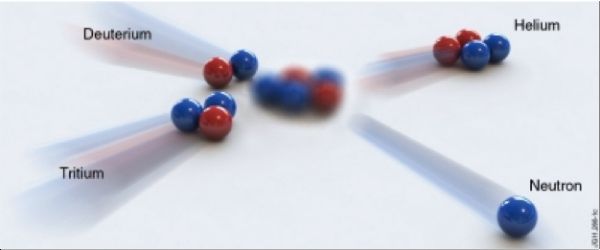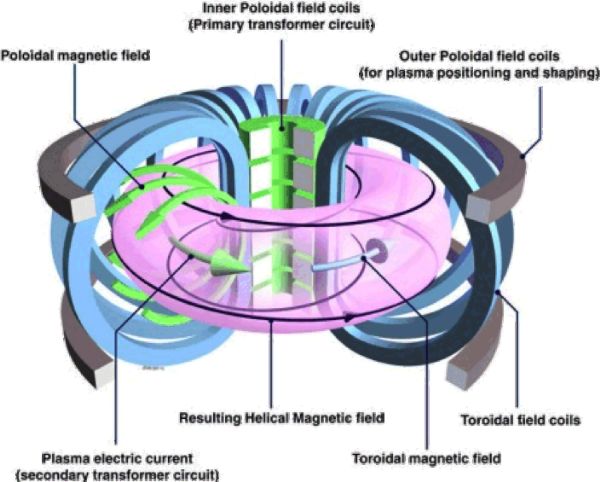| Is Nuclear Fusion the way forward for cheap energy? | 02/12/2013 |
| Some of the most debated questions in the world today are about energy. What happens when it runs out? How do we stop the rising demand for energy? How do we stop the costs from rising? What will happen to our carbon emissions in 100 years? Nuclear fusion, the process that powers the Sun, is one of the most promising options for generating large amounts of carbon-free energy in the future. Whilst producing carbon-free energy, it is also thought to be a cheaper option for energy. Here is some more information about Nuclear fusion. What is Nuclear Fusion?  Fusion is the process that heats the Sun and all other stars, where atomic nuclei collide together and release energy. Fusion scientists and engineers are developing the technology to use this process in tomorrow's power stations. In a fusion reaction, energy is released when two light atomic nuclei are fused together to form one heavier atom. This is the process that provides the energy powering the Sun and other stars, where hydrogen nuclei are combined to form helium. To achieve high enough fusion reaction rates to make fusion useful as an energy source, the fuel (two types of hydrogen – deuterium and tritium) must be heated to temperatures over 100 million degrees Celsius. At these temperatures the fuel becomes a plasma. This incredibly hot plasma is also extremely thin and fragile, a million times less dense than air. To keep the plasma from being contaminated and cooled by contact with material surfaces it is contained in a magnetic confinement system. The most promising device is this ‘tokamak', a Russian word for a ring-shaped magnetic chamber. Why isn't Nuclear Fusion already being used? Nuclear fusion has the disadvantages of having high maintenance costs and also the inability to control the energy released by the process. No scientists have been able to contain a fusion reaction long enough for there to be a net energy gain, but nuclear fission is already producing 11% of the worlds energy needs. Scientists hope they can change this though as a fusion reaction does not produce the dangerous products that a fission reaction does. In both processes, some of the mass of the original atoms are converted into energy; fusion tends to convert more mass into energy than fission does, so fusion tends to create more energy. Heavier atoms needed for a fission chain reaction tend to be unstable and radioactive, and thus the fission process tends to produce more radioactivity. How does a Magnetic Confinement System work?  Magnetic confinement is the approach that many laboratories are researching to provide energy from fusion. A plasma of light atomic nuclei is heated and confined in a circular bottle known as a tokamak, where it is controlled with strong magnetic fields. In a magnetic fusion device, the maximum fusion power is achieved using deuterium and tritium. These fuse to produce helium and high-speed neutrons, releasing 17.6MeV (megaelectron volts) of energy per reaction. This is approximately 10,000,000 times more energy than is released in a typical chemical reaction. A commercial fusion power station will use the energy carried by the neutrons to generate electricity. The neutrons will be slowed down by a blanket of denser material surrounding the machine, and the heat this provides will be converted into steam to drive turbines and put power on to the grid. Return |
|
Make a comment on this article
All comments are vetted before being published on this page
Comments
Be the first to write a comment on this article

